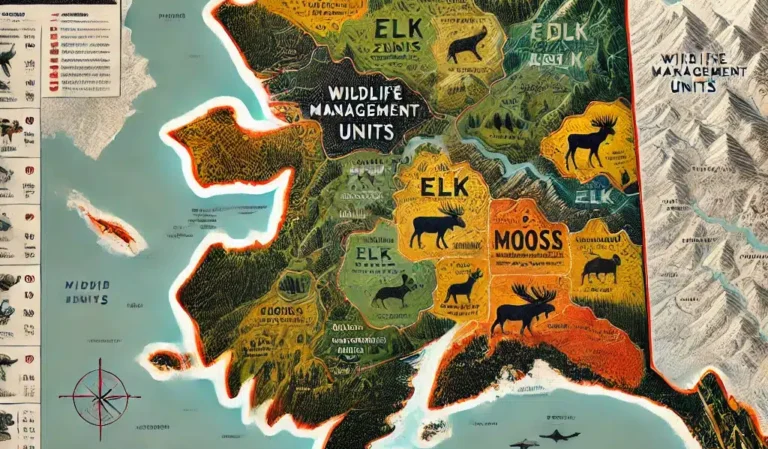Idaho Elk Hunting: 7 Tips for an Effective Experience
Idaho is a state renowned for its rich hunting heritage, with a long-standing tradition that dates back to the days of Native American tribes who relied on hunting for survival. Today, this spirit of adventure and connection with nature continues to thrive in the form of Idaho elk hunting, an activity that has captivated hunters from all walks of life.
The rugged and diverse landscapes of Idaho provide the perfect backdrop for this thrilling pursuit, attracting both locals and out-of-state enthusiasts in search of the ultimate hunting experience.
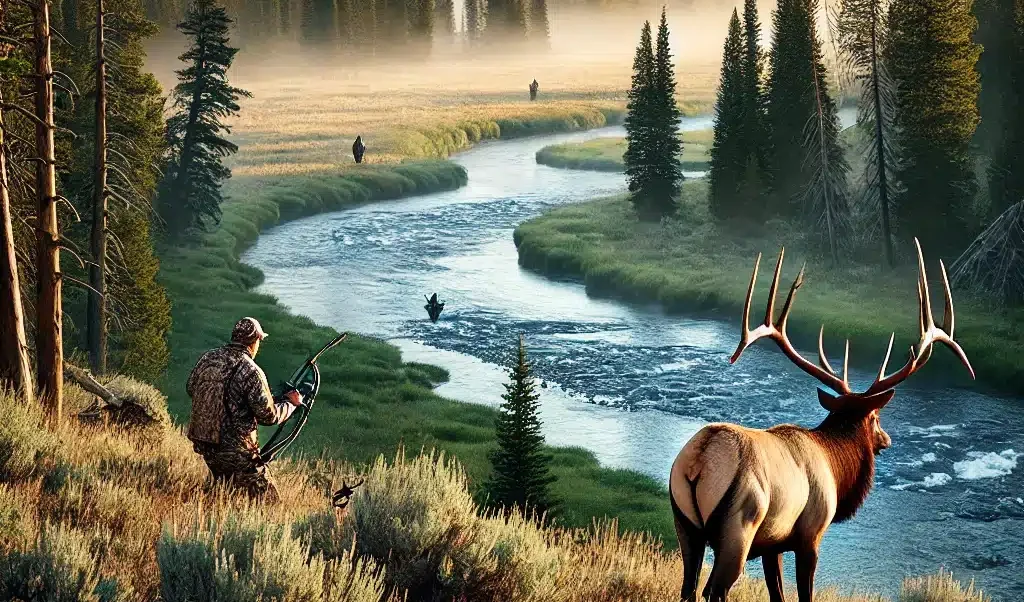
Idaho’s hunting heritage is deeply rooted in its historical significance as a frontier state. From the early days when fur trappers ventured into the wilderness in search of beavers, to pioneers who relied on hunting for sustenance during westward expansion, Idaho has always been intimately tied to its natural resources.
As settlers began establishing permanent communities, hunting became not only a necessity but also a recreational pursuit that fostered camaraderie among neighbors. Over time, as wildlife populations thrived due to careful management and conservation efforts, Idaho became renowned for its abundant game species.
Elk have emerged as one of the main attractions for hunters due to their majestic presence and challenging nature. As such, elk hunting has become synonymous with Idaho’s outdoor culture.
Elk Hunting – A Popular and Thrilling Activity
Elk hunting is an exhilarating activity that combines strategy, skill, and endurance. The sight of a bull elk striding through dense forests or traversing vast open meadows evokes both awe and excitement among hunters.
Beyond the adrenaline rush it provides, elk hunting offers individuals an opportunity to reconnect with nature on a profound level. In Idaho specifically, elk are highly prized game animals due to their impressive size and magnificent antlers.
The state boasts diverse habitats ranging from high mountainous regions to sprawling valleys, providing ideal conditions for elk populations to thrive. This abundance, coupled with responsible wildlife management policies, has made Idaho a premier destination for hunters seeking a memorable and rewarding elk hunting experience.
Whether it’s the challenge of tracking elusive herds, the thrill of a successful hunt, or simply immersing oneself in the untamed beauty of Idaho’s wilderness, elk hunting offers an unmatched sense of adventure and fulfillment. As we delve deeper into Idaho’s elk hunting landscape in this article, we will explore the various aspects that make it a cherished pastime for both seasoned hunters and newcomers alike.
Idaho’s Elk Population
Idaho boasts a robust population of elk, making it an ideal destination for hunting enthusiasts. The state is home to diverse elk herds, with a population estimated to be over 100,000. These magnificent animals are distributed across various regions of Idaho, including the northern panhandle, central mountains, and southern deserts.
Distribution of Elk Herds
The distribution of elk herds in Idaho is influenced by several factors such as habitat quality, food availability, and terrain. In the northern part of the state, characterized by dense forests and rugged mountains, Rocky Mountain elk prevail. These subspecies are known for their impressive antler size and reside in areas like the Clearwater National Forest and Selway-Bitterroot Wilderness.
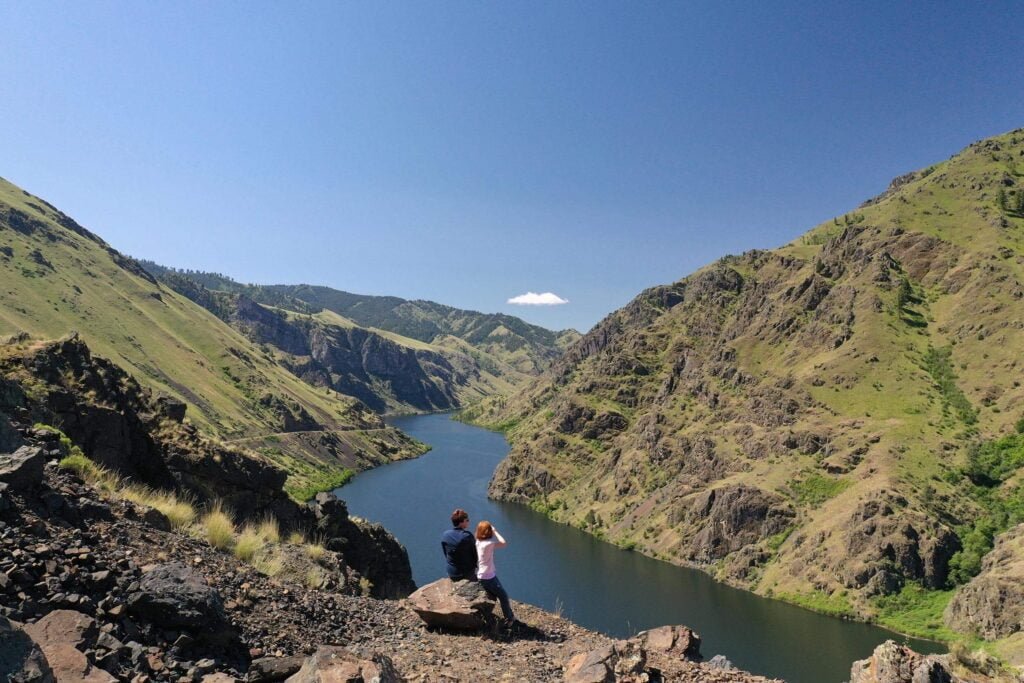
In contrast, Roosevelt elk dominate the southwestern portion of Idaho. This subspecies thrives in the dense coastal rainforests along the border with Oregon.
Known for their larger body size compared to Rocky Mountain elk, Roosevelt elk can be found in places like Hells Canyon National Recreation Area and Payette National Forest. While these two subspecies are most prominent in Idaho’s elk population, small pockets of other subspecies, such as Tule elk, may also be found in certain areas.
Hunting Seasons and Regulations
Idaho’s hunting seasons for elk, including archery, rifle, and muzzleloader seasons
Idaho offers a diverse range of hunting opportunities for elk enthusiasts throughout the year. The state provides separate hunting seasons for archery, rifle, and muzzleloader, ensuring hunters can choose the best method for their preferences and skills.
The archery season typically opens in late August or early September when elk are still in their summer feeding patterns. This season allows hunters to test their skills near these majestic creatures, requiring patience and precision.
In contrast, the rifle season begins later in the fall when elk enter their rutting period. This season attracts hunters with shorter-range shooting opportunities and adrenaline-pumping encounters during peak bugling activity.
The muzzleloader season takes place after the rifle season ends, providing a unique challenge for those who appreciate traditional hunting methods. Each season caters to different hunting styles, encompassing breathtaking landscapes and unforgettable experiences.
Explanation of licensing requirements, draw systems, and tag quotas to ensure sustainable hunting practices.
Specific regulations govern licensing requirements for elk hunting in the state to maintain sustainable elk populations and preserve Idaho’s natural resources. Hunters must obtain an Elk Tag or Permit from the Idaho Fish and Game Department before embarking on their hunt.
Due to high demand exceeding tag availability in some units, the department employs draw systems to allocate tags fairly among applicants. These draw systems effectively manage herd populations while providing equal opportunities for all hunters interested in pursuing this magnificent game animal.
Additionally, tag quotas are established based on scientific research conducted by wildlife biologists who monitor population dynamics closely. These quotas ensure that harvest levels remain within sustainable limits while allowing for healthy herd growth.
Idaho actively promotes responsible and sustainable elk hunting practices by implementing comprehensive regulations around licensing requirements, draw systems, and tag quotas. This approach ensures the long-term health and conservation of elk populations and fosters a sense of fairness among hunters seeking to pursue their passion for this majestic game animal.
Hunting Methods and Techniques
The Art of Spot-and-Stalk
Spot-and-stalk is a widely practiced hunting technique in Idaho that requires stealth, patience, and a keen eye for detail. Hunters employ binoculars or spotting scopes to scan vast landscapes in search of elk. Once a target is spotted, the next step is carefully planning an approach considering wind direction, cover availability, and terrain conditions.
Moving slowly and silently, hunters close the distance to get within range for an accurate shot. This method demands physical endurance as it often involves traversing rugged terrains and covering long distances on foot.
Calling: The Language of Elk
Calling is a fascinating technique skilled hunters use to entice elk by mimicking their vocalizations. Hunters can communicate with elk in their language by utilizing various calls, such as bugles, cow calls, or grunt tubes.
Timing and accuracy are crucial when employing calling techniques. Successful callers can elicit responses from bulls, including bugling (a distinctive mating call), chuckling sounds, or the excited chirps of cows communicating with their young ones.
Still-Hunting: The Art of Ambush
Still-hunting requires utmost patience and careful observation as hunters move slowly through the woods while remaining alert for movement or sound. Unlike spot-and-stalk, where hunters move towards a specific target, still-hunters often position themselves near known elk habitats, such as feeding areas or transition zones between bedding areas and water sources. By blending into the surroundings through camouflage clothing and strategic positioning behind natural cover like trees or rock formations, still-hunters aim to surprise elk by patiently waiting for them to appear within range.
Stand-Hunting: A Patient Strategy
Stand-hunting entails setting up stationary ambush points along well-traveled elk routes or near feeding and watering spots. This technique involves sitting quietly in concealed stands such as tree stands or ground blinds, remaining motionless for extended periods.
Stand-hunters rely on their knowledge of elk behavior and habitat to position themselves strategically for a prime opportunity at a close-range shot. Patience is key in stand-hunting, as it may require waiting for hours or even days for the right moment.
Strategies for Locating Elk: Tracking Signs
To increase their chances of finding elk, hunters pay close attention to tracking signs left behind by these majestic animals. Elk rub on trees with their antlers, scrape on the ground with their hooves, and wallow in muddy areas during the rutting season.
These signs can provide valuable information about recent elk activity and guide hunters toward potential hunting areas. Bugling is a distinctive vocalization made by bull elks during the mating season that can be heard from miles away.
By listening attentively to bugling calls echoing through valleys or dense woods, hunters can determine an elk’s approximate location and move closer for an encounter. Through mastering these hunting methods and techniques and honing their skills in interpreting tracking signs and vocalizations of elk, hunters immerse themselves in the art of pursuing these magnificent creatures amidst Idaho’s breathtaking wilderness.
Essential Gear for Elk Hunting in Idaho
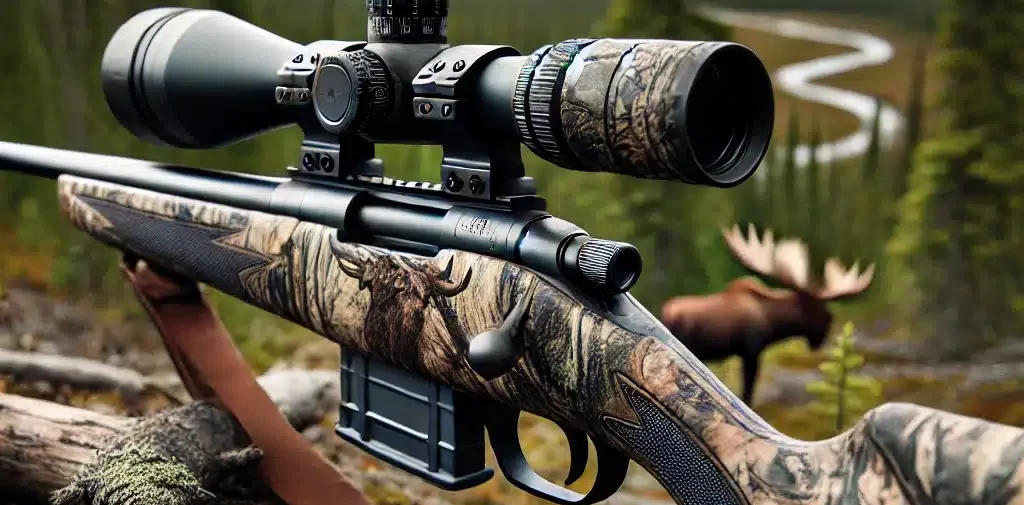
Firearms or Archery Equipment
When preparing for an elk hunt in Idaho, one of the most critical decisions is choosing the appropriate weapon. A reliable and accurate rifle chambered in .270 Winchester, .30-06 Springfield, or .300 Winchester Magnum is highly recommended for firearm hunters. The chosen caliber should offer sufficient power and range to take down an elk with a well-placed shot effectively.
On the other hand, archery enthusiasts should opt for a compound bow with a draw weight of at least 60 pounds to ensure enough kinetic energy for ethical kills. Whatever weapon you choose, practicing extensively before heading out into the field is vital.
Clothing Layers Suitable for Changing Weather Conditions
The weather in Idaho can be unpredictable and vary greatly throughout the hunting season. Dressing in multiple layers is crucial to combat these fluctuations and remain comfortable during long hours of pursuit.
Begin with a moisture-wicking base layer that helps regulate body temperature and keeps sweat away from your skin. Over this, add insulating layers like fleece or down jackets to trap heat.
Top it off with a waterproof and windproof outer layer to protect against rain or snow showers. Don’t forget about proper footwear—investing in durable boots that provide ankle support and are waterproof will keep your feet dry and comfortable throughout the day.
Optics (Binoculars or Spotting Scopes)
Quality optics is essential when hunting elk in Idaho’s vast landscapes, where spotting game from afar is crucial for success. A good pair of binoculars with magnification between 8x and 10x will allow you to scan the terrain more effectively while minimizing eye strain during extended glassing sessions.
Consider adding a lightweight spotting scope if you prefer more detailed observation without compromising stability. Look for optics with excellent light transmission, a wide field of view, and sufficient magnification to spot elk bedded down or feeding in distant meadows.
Backpacks with Necessary Supplies (Water Filter System, First Aid Kit)
A reliable backpack is useful for carrying your gear and serves as your lifeline in the backcountry. Look for a pack that offers ample storage space, multiple compartments for organization, and comfortable shoulder straps to help distribute weight evenly. Essential supplies to pack include a water filter system to ensure access to safe drinking water throughout your hunt.
Additionally, having a well-stocked first aid kit is crucial, as accidents can happen even in the most carefully planned expeditions. Include bandages, antiseptic ointment, pain relievers, and any personal medications you may need.
Camping Gear if Planning an Extended Hunt
Proper camping gear is imperative for hunters planning an extended elk hunting adventure in Idaho’s wilderness areas. A reliable tent that can withstand adverse weather conditions is essential for shelter during overnight stays.
Ensure you have a warm sleeping bag suitable for the expected temperatures and a comfortable sleeping pad to insulate you from the cold ground. Don’t forget camping essentials such as cooking equipment (stove or campfire cooking gear), food storage containers (bear-resistant if necessary), and lighting equipment (headlamps or lanterns) for navigating camp during nighttime hours.
Game Bags or Meat Coolers for Proper Meat Preservation
After successfully harvesting an elk, it’s important to properly preserve the meat to ensure its freshness and quality until you can get it processed. Game bags of breathable material should be used when field dressing the animal.
These bags allow air circulation while keeping flies and insects away from the meat. Once packed in game bags, the meat should be stored in a cool environment to prevent spoilage.
Hunters can opt for quality collapsible coolers that are easy to transport or traditional cooler chests with sufficient ice or cooling packs to maintain a consistent temperature. By acquiring and preparing the essential gear mentioned above, hunters embarking on an elk hunting expedition in Idaho will be better equipped for success, safety, and an overall enjoyable experience in the beautiful wilderness of the Gem State.
Selecting an Elk Hunting Unit
Factors to Consider
When it comes to selecting an elk hunting unit in Idaho, several crucial factors need to be taken into account. One of the primary considerations is the size of the elk herd in a particular unit. A larger herd indicates healthier populations, which increases your chances of encountering elk during your hunt.
Additionally, assessing the trophy potential is essential for those seeking a memorable and rewarding hunting experience. Some units may have higher concentrations of mature bulls with impressive antler sizes, making them more desirable for trophy hunters.
Public Land Access vs Private Land Options
Another critical factor when choosing an elk hunting unit is evaluating the access options, such as public land versus private land opportunities. Idaho offers vast expanses of public land, including national forests and wilderness areas, which can provide ample hunting grounds accessible to all licensed hunters. Researching public land regulations and obtaining appropriate permits beforehand is essential for a successful hunt on these lands.
On the other hand, some hunters may prefer pursuing elk on private lands where access can be restricted or require permission from landowners. Exploring leasing options or working with outfitters who have access to private lands can offer unique game quality and seclusion opportunities.
Utilizing Resources
To make an informed decision about which specific unit(s) to target for your elk hunt in Idaho, it’s crucial to utilize various resources. Maps are invaluable tools that provide crucial information about each unit’s topography, vegetation patterns, water sources, and potential hunting spots.
Topographic maps help identify advantageous terrain feats, such as ridges or sad does, that elks might frequent during their movements throughout different seasons. Satellite imagery provides a bird ‘ s-eye view of the landscape and allows hunters to scout potential areas before heading into the field.
Moreover, engaging with online forums and communities dedicated to elk hunting can provide valuable insights and firsthand experiences from fellow hunters who have previously hunted in specific units. Sharing knowledge about successful hunting techniques, preferred locations, and recent elk sightings can assist in narrowing down your choices.
Outing trips to different units also allow you to gather firsthand information about elk behavior, patterns, and habitat preferences. These trips enable you to observe signposts like tracks, droppings, or beds while familiarizing yourself with potential hunting areas.
By considering factors such as herd size, trophy potential, access options (public vs private land), and utilizing resources like maps, online forums, and scouting trips, hunters can make well-informed decisions when selecting an elk hunting unit in Idaho. This careful planning ensures a greater likelihood of encountering elk during the. It enhances the overall experience for passionate hunters while exploring the magnificent landscapes that Idaho offers.
Idaho: The Gem State
From its breathtaking natural landscapes to its abundant wildlife, Idaho truly lives up to its nickname as the Gem State. With vast stretches of pristine wilderness and diverse ecosystems, this region offers a haven for elk-hunting enthusiasts seeking adventure and an unparalleled connection with nature.
The state’s picturesque mountains, sprawling meadows, and dense forests provide the perfect backdrop for an unforgettable hunting experience. Whether you are a seasoned hunter or a novice looking to embark on your first elk-hunting expedition, Idaho offers many opportunities.
The Vast Elk Hunting Opportunities in Idaho
Idaho boasts one of the healthiest elk populations in the country, making it an ideal destination for avid hunters. The state is home to various subspecies of elk, including the majestic Rocky Mountain elk and the massive Roosevelt elk.
These magnificent creatures roam freely across Idaho’s diverse terrain, offering hunters ample chances to pursue their prey. From rugged backcountry excursions in remote wilderness areas to specially designated hunting units with high success rates, Idaho caters to hunters of all levels.
Conservation Efforts and Sustainable Hunting Practices
Idaho takes great pride in its commitment to conservation efforts and sustainable hunting practices. The state’s wildlife management agencies work diligently to maintain healthy elk populations while considering factors such as habitat preservation and herd dynamics.
By implementing strict regulations on licensing requirements, tag quotas, and hunting seasons, Idaho ensures that hunting remains a responsible activity that does not compromise the long-term viability of these magnificent animals. Hunters in Idaho are encouraged to be stewards of the land and respect the laws governing their pursuit and the natural environment they are privileged to explore.
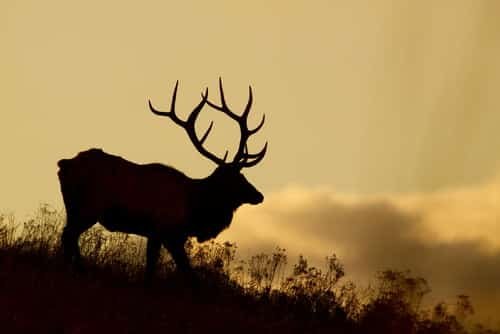
Conclusion
Embarking on an elk hunting adventure in Idaho is a thrilling endeavor that promises unforgettable moments amidst pristine wilderness. With its thriving elk populations, well-managed hunting seasons, and diverse landscapes, Idaho offers hunters a chance to connect with nature on a profound level.
Whether pursuing the elusive Rocky Mountain elk or marveling at the grandeur of the Roosevelt elk, the Gem State provides ample opportunities for both novice and seasoned hunters alike. So gear up, immerse yourself in Idaho’s wild beauty, and create memories that will last a lifetime. Happy hunting!





